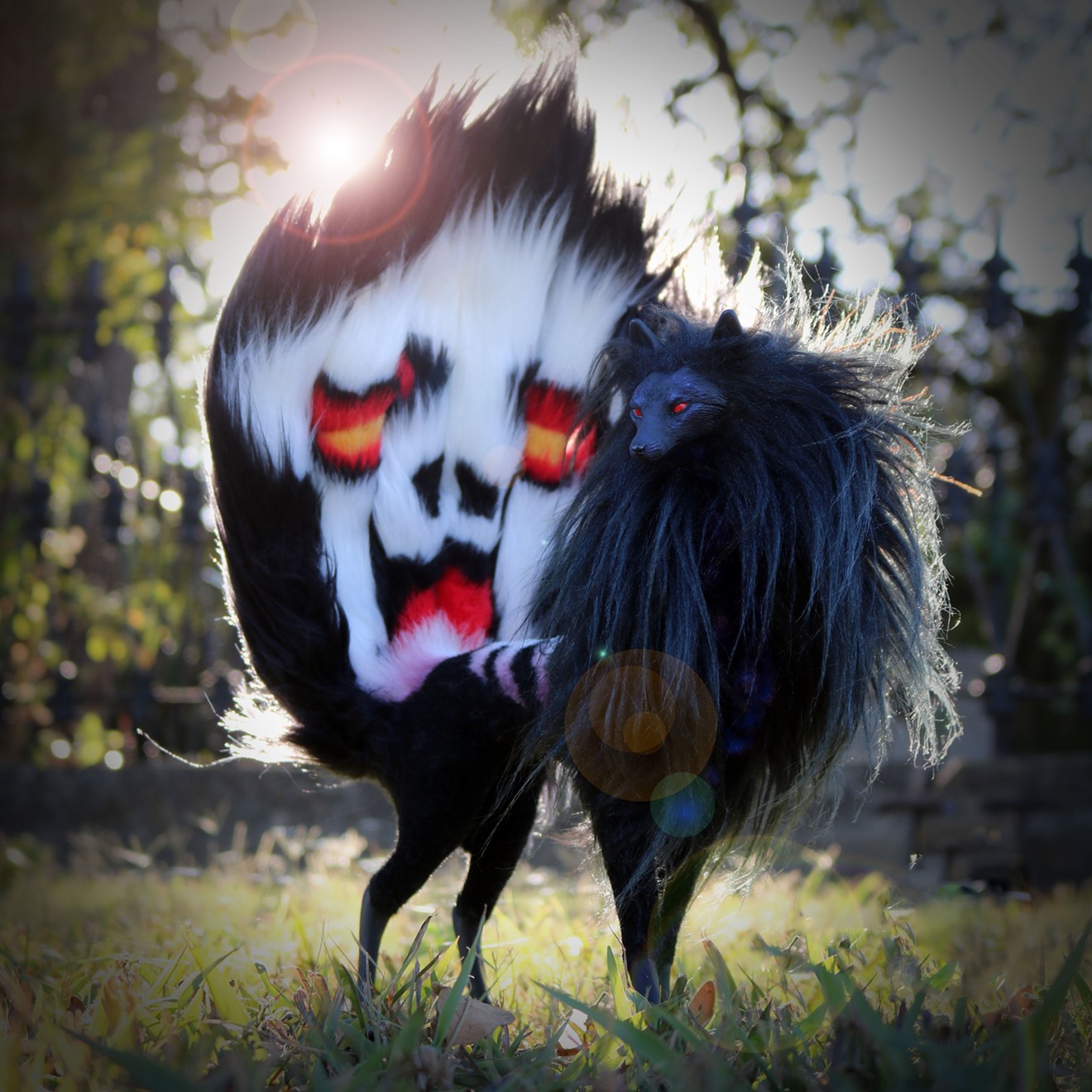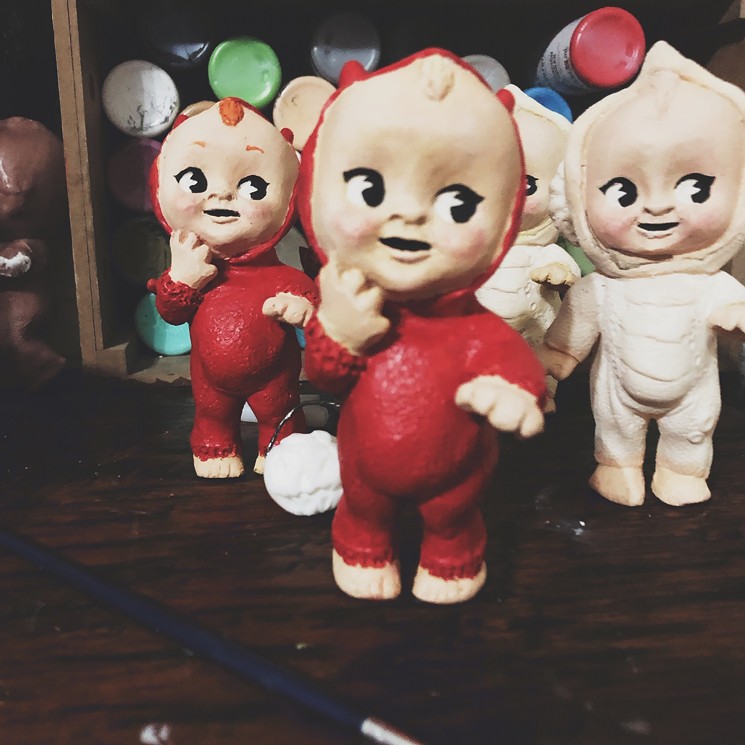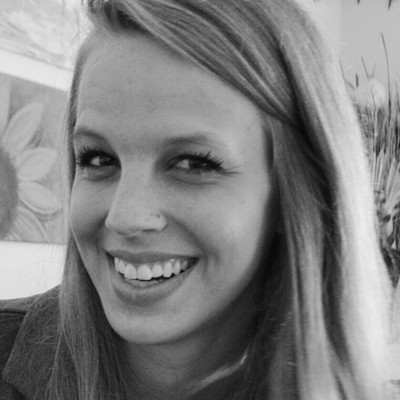It’s unlikely that you had dolls like these as a kid. Even the artists didn’t have dolls like these as kids. For some of them that was the motivation behind making dolls in the first place — their inability to afford similar products from other artists.
Now that they’re full-time dollmakers, kids aren’t their intended target. Their clients are generally adults, some of whom are interested in the dolls for nostalgia’s sake, others loyal fans of the art form. Thanks to social media, each of these artists has found their online community and are able to support themselves by hawking their wares almost entirely online.
Anya Bosworth, Anya Boz Artist, www.anyabozartist.com, $600-$1,600
There’s something distinctly spiritual about the dreamlike creatures that Anya Bosworth crafts, probably because she sees her role as an artist as part creator and part channeler.
“I feel like when I create them, they kind of develop as I’m working on them. It’s almost like they’re speaking to me what they want to look like and I’m just kind of channeling that,” she says. “It feels like they are beings from another world being channeled into this world.”
Bosworth makes a line of fantastically realistic dolls that she calls Room Guardians. Many of them resemble foxes, since that was the form of Bosworth’s original Room Guardian and also because she has a special affinity for foxes, but there are also wolf-like creatures, cat-like creatures and many others. Some have hooves but some have human hands, a signature look she’s particularly fond of. A couple of her creatures have gone viral.
You might recognize her work from the Persian Cat Meme, which was an early work, as well as a more recent creature with the face of an owl, antlers and human hands. There’s some debate on the internet about whether this creature is real, which Bosworth says is flattering but also pretty hilarious. It goes to show, though, how good she is at her craft.
“I like standing on that little line between fantasy and reality, where it looks like something that could exist,” she explains. When she first started making Room Guardians, she says she had no idea that poseable, one-of-a-kind animal art dolls were an established art form.
“There’s like a whole world of artists who do similar things,” she says. “My intention was never to make a doll. It was to make a creature that sat beside my bed.” Hence the name, Room Guardians.
“A lot of cultures have totems that would protect you and whatnot. The Room Guardians have a crystal heart and they are made with the intention of watching over your room and expelling negative energy, that type of thing,” she says. “And of course, if you’re not into that, then they’re just cool art.”
Her creatures have a certain predatory aspect to them, some toeing the line between dreamy and nightmarish. She likens them to gargoyles. “Gargoyle are really ugly, terrifying creatures on a church because they’re meant to protect the church,” she explains. “It’s like, ‘Why are these demons here?’ But they’re protecting.” If you’ve ever fantasized about befriending the monster under your bed, you get the idea. “We all want our own dragon.”

Some of Lora O’Shaughnessy Kewpie-doll creations vaguely resemble Furby, but don't hold that against them.
courtesy Lora O’Shaughnessy
Once Lora O’Shaughnessy of Egan Street Design unapologetically embraced being an adult who really likes stuffed animals, everything got a lot easier.
“Some people think, ‘Oh stuffed animals, that’s for kids.’ No, it can be for anyone,” she insists, and she’s clearly not alone in her opinion since she has managed to make a business out of selling artisan plushies.
“Even with the internet I’m sometimes like, ‘Am I the only one who’s into this stuff? But then I do a little searching and I’m like, ‘Oh no no, I’m good,’” she says, laughing.
Better than good, even: she sells out of about 60 to 80 toys within a couple of days after posting new batches in her shop. The plushies she makes are centered on Kewpie dolls, the once-extremely-popular vintage dolls based on the 1909 comic strip by cartoonist Rosie O’Neill. Some of O’Shaughnessy’s patrons are hardcore Kewpie fans who love her personal twist, which usually involves remixing Kewpie dolls with something a little closer to home for all those nostalgic '80s and '90s kids out there, another fan base O’Shaughnessy likes to tap into.
For example, one of her recent hit creations is Kewpie dolls with plush bodies that resemble a certain nightmare-fuel toy once at the top of every '90s kid’s Christmas list. Yes, Furby, obviously. Except O’Shaughnessy’s variation is much cuter and, bonus, won’t wake you up in the middle of the night for years after its batteries have corroded to demand unfailing devotion.
“A lot of it’s based on things I like or things from my childhood,” she says. She also draws inspiration from textures. “I’m the person who will go into the store and touch everything,” she explains. “I started making plush creatures because I want my art to be friendly and warm and have all these good feelings.”

Anyssa Akridge says works based on ball-jointed dolls were popularized in Japan, as you might be able to tell from this one.
courtesy Anyssa Akridge
Anyssa Akridge of Digidolls doesn’t care what her fans want; she creates for herself.
“Usually what I make is pretty weird. People are like, ‘OK, I haven’t seen this before, and I want to buy one.’ So it has worked out,” Akridge says.
What she creates are ball-jointed dolls — or BJDs — and they’re a whole big deal.
“Ball-jointed dolls is a type of fandom,” she explains. “It’s essentially collectors who collect a certain style of articulation.”
Meaning, the ball-jointed-ness? Yeah, that’s the point. Ball-jointed dolls are hollow and have elastic running through the doll to keep it together, as opposed to dolls made with the ball and cup joint elements that use friction fitting to add articulation. But the ball-jointed-ness is also not the point at all.
Confused? Spend some time on ball-jointed doll Instagram and you’ll see that a big emphasis is on how the dolls are styled — the face makeup, the hair, the clothes.
“It got really popularized in Japan. The fandom started booming with this company called Volks, where they really defined what it is and then people took on their own interpretations of that,” Akridge says. “When the style was first popularized, they kind of had two styles: One was a very anime-type of style and the other one was realistic, but with an exaggerated realism.”
The dolls Akridge designs are on the cartoonish side of the spectrum. Akridge has a degree in 3D modeling from the University of Texas at Dallas, and she leans heavily on her 3D modeling experience in her work.
“My sculpts lean more fantasy, so I never do a sculpt that’s just a human. It’s always a creature-hybrid,” she says. “I also tend to do more plus-sized, curvy sculptures because I think that they are more aesthetically pleasing and it’s also hard to find a doll like that.”
She is making a line called Puppy Girls, which is exactly what the name implies — a cutsie dog-girl hybrid — and another based on the Chinese Zodiac signs, which include a rat and a rabbit hybrid.
“The community is based off of originality. People are looking for something different and for something that will fit within their own kind of world,” Akridge explains. “Since BJDs are about original characters, people in this community hate it if it even seems like you’re trying to copy someone else. In this community it’s easy to make a business model — even though I don’t think it’s even a proper model — that’s just like, OK, I’m going to make whatever I want.”
Rachel Garrison, Vandolls Folk Art, etsy.com/vandollsfolkart, $20-160
Bring on the spooky. It’s Halloween all year long for Rachel Garrison of Vandolls Folk Art and once again, thanks to the internet, Garrison has found her virtual family of Halloween lovers.
“I do as well in January as I do in September,” she says of her sale season. Apparently some people can’t get enough of ghosts and ghouls. One night of the year just doesn’t cut it.
“I’ve always been a little bit eccentric,” she says with a laugh. Garrison is a fourth-generation folk artist, and she doesn’t exclusively make dolls, but they are an important part of her offerings. She’s in the process of creating a line of Kewpie-inspired sculptures, each made in her signature folk art style.
“I hand-sculpt my own version of the Kewpies,” she explains. “I’m making a 12-piece set. I’ve been trying to release one a month.” So far she has released the Creature from the Black Lagoon Kewpie and a Devil Kewpie.
“The Devil is the classic Kewpie from back in the 1940s, and the Creature from the Black Lagoon is just my take on how I think that Kewpie should be,” she says.
Growing up in a family of artists meant that Garrison has always been an artist.
“I grew up going to craft shows,” she says. “Since I was about 5 or 6 I was going to craft shows with my mom, and when I hit about 9 or 10 I started making my own folk art from just odds and ends that I’d find around the house. I would carry them around at the craft shows. I’d have a basket and I would walk around and sell my wares.”
Why Halloween? Because her family didn’t celebrate holidays so she spent a lot of time fantasizing about what it would be like if they did, Garrison says, and Halloween was the only holiday she could find a way to celebrate anyway.
“After school on Halloween, I’d take the bus and instead of going straight home, I’d go trick-or-treating on my way home. It was the only way I was able to celebrate a holiday, and so Halloween is something I’ve always treasured,” she says. “It’s always been my happy place. It was the one thing that was accessible to me, so I hold it very dear.”
Spookiness aside, Garrison draws a lot of her inspiration from 1940s and 1950s-era style. “Most of what I have are antiques, and I’m very drawn to that cutesy side,” she says. “I like to create my own little world. I don’t really think too much about what people are going to think of my art. I’m making my own world and everyone is welcome to join in.”














